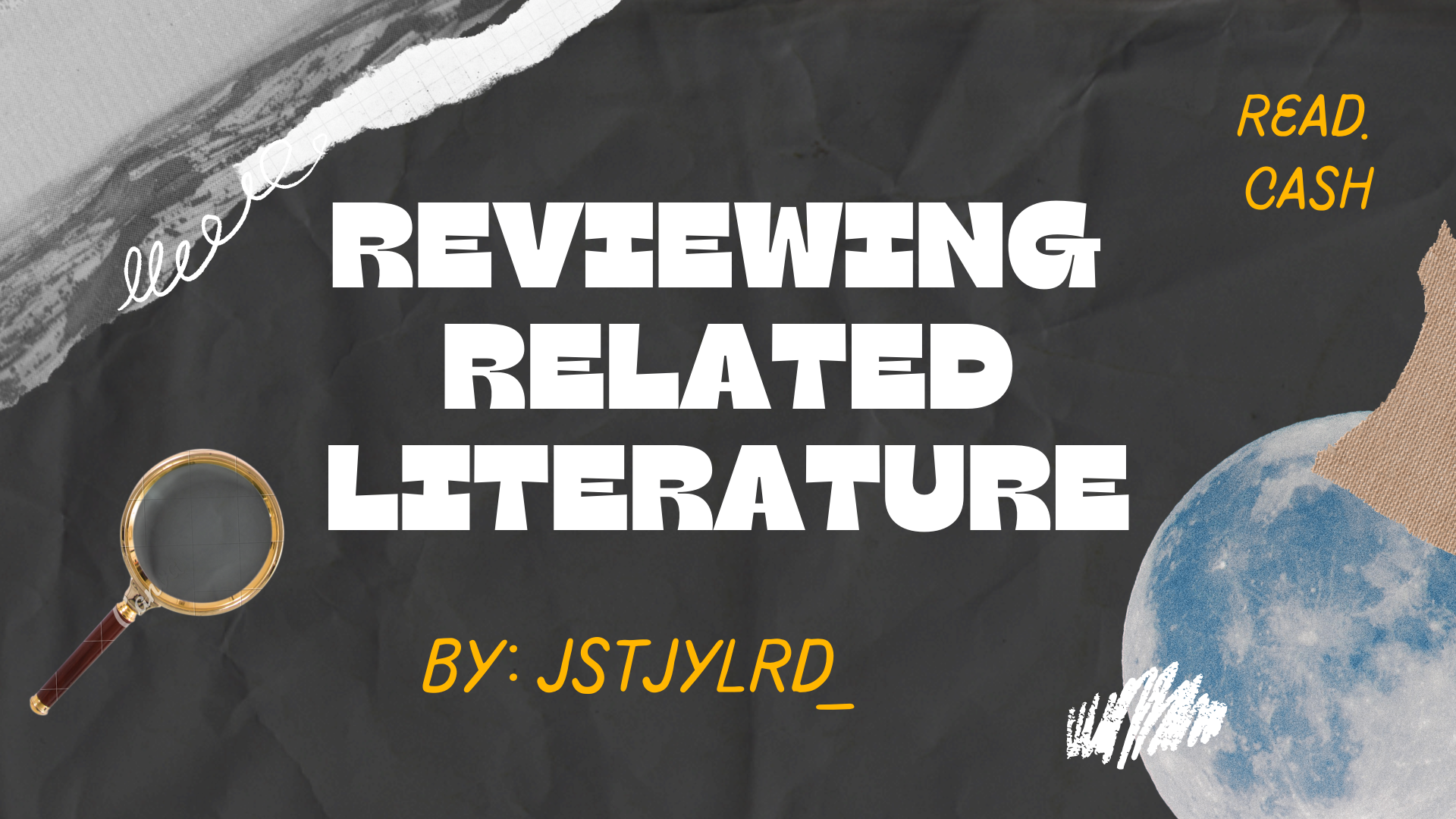Reviewing Related Literatures

We are all familiar with different sorts of printed materials, especially those common ones, like magazines, books and newspapers. However, in other kind of piece of writing, there is this thing termed as a “research paper”. A research paper is a piece of academic writing that aims to analyze, evaluate, or interpret a single topic, quantitative or qualitative, using empirical and scientific evidences. Basically, it is consist of five general chapters, and one of which is the Chapter 2 and it is the review of related literature (RRL).

Ridley, 2012 gave description to literature as any oral or written record of man's significant experiences that are expressed through an ordinary manner. It is conveyed or expressed directly, like those that are written in books, journals, articles, and other online reading materials. On the other hand, indirect expressions are those that are not written or spoken at all, yet, is a mirror image of someone’s environment. From these idea, we will come up with the definition of Review of Related Literature by Prieto et al., 2017, which is an overview of all the writings relative to a specific topic. To add more, it is the process that pertains to the collection, selection and the reading of books, journals, reports, abstracts, and other reference materials.
In this article, we will learn the three different steps in reviewing related literatures.
Step 1: Search for the Literature
1. Narrow down your topic. In gathering different sources or literatures, you should have focus like a clearly indicated scope, as well as the aim or goal of the said review.
2. Be specific. Isolate and center only your desired research on key themes or issues that is inclined to your interest.
3. Be wise in choosing literatures. You can choose studies conducted by experts and authorities under that particular identical field. And, as much as possible, use peer-reviewed articles or journals.
Step 2: Reading and Citing Source of Material
The following are the three terms to express recognition of author's ownership of borrowed ideas in accordance to Sharp, 2012.
1.) Acknowledgement. This gives identification to people who gave contribution throughout the making of the manuscript, which is written of course at the start of the paper.
2.) References or Bibliography. These are the general list of literary materials with the inclusion of all books, journals, theses, and dissertations, together with other aforementioned sources above. These are arranged alphabetically. The informations needed in making the referencing list are:
a.) Author's name
b.) Date of the publication of the source
c.) Page number where you found the information
d.) Publisher
e.) Place of publishing
f.) Volume
g.) Edition
h.) Other relevant information (URL, DOI, etc.)
Example:
Benton, J. J. (2004). Hydroponics. A Guide to Student Experiments Growing Plants without Soil. Cornell University. Retrieved at: http://csip.cornell.edu.
3.) Citation, or in-text citation. This is referring an author within the main body of text. It can be done by paraphrasing, summarizing, or through quotations. There are three basic methods of referencing the authors and these are APA (American Psychological Association), MLA (Modern Language Association) and the Chicago Manual Style.
Step 3:) Creating or synthesizing your review of related literature.
Synthesizing means to putting separate facts, etc. together to form a single piece of work. It can be done by some pattern techniques like paraphrasing, quoting, and summarizing it. In doing so, you may either change the arrangement of ideas, structures of language by using synonyms, changing format of words by comparison-contrast, chronological order, passive-active sentences, inductive-deductive order, or fusing opinions with the author's ideas.
Reviewing related literature cannot only be applied to writing research papers. This is also essential in writing essays or articles, and publishing it in any website like the read.cash. By doing so, this will strengthen someone's claims of any systematic, purposeful and well-defined output. Also, it is will give assurance to your readers and sponsors that your work has been well conceived. All in all, reviewing related literatures is a step to become an influential and effective writer.
Reference:
Prieto et al., (2017). Practical research 1 for senior high school: Qualitative. Quezon City, Metro Manila: LORIMAR Publishing, Inc.
Ridley, D. (2012). The Literature Review: A Guide for Students. Los Angeles: Sage.
Sharp, J. (2012). Sucess With Your Educational Research. USA: John Wiley and Sons.
